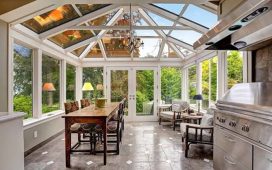In the digital era, the way we use and design our living spaces has undergone a significant transformation. The concept of multifunctional home spaces has gained popularity as technology continues to shape our daily lives. From smart home devices to remote work setups, homes are now expected to serve multiple purposes efficiently. Let’s explore how this evolution has unfolded and the impact it has on modern living.

Redefining Traditional Home Spaces
Traditionally, homes were designed with distinct rooms serving specific functions such as living rooms, dining rooms, bedrooms, and home offices. However, in the digital era, these boundaries have started to blur as more people seek flexibility and efficiency in their living spaces. The rise of remote work, online learning, and entertainment streaming has led to a shift towards creating multifunctional areas that adapt to various activities.
Integration of Technology
Technology plays a crucial role in the evolution of multifunctional home spaces. Smart home devices, such as voice assistants, smart lighting, and automated thermostats, allow homeowners to control their environment with ease. This integration of technology not only enhances convenience but also enables the seamless transition between different functions within a space.
Adaptable Furniture and Layouts
Another key aspect of multifunctional home spaces is the use of adaptable furniture and layouts. Furniture pieces that can serve multiple purposes, such as sofa beds, folding tables, and modular shelving units, are becoming increasingly popular. Additionally, flexible layout options, such as open floor plans and movable partitions, enable homeowners to customize their space according to their current needs.
Creating Zones for Different Activities
To maximize the functionality of a multifunctional home space, creating distinct zones for different activities is essential. For example, a living room area can double as a home office during the day by incorporating a desk and ergonomic chair. By defining these zones through furniture arrangement and decor, homeowners can maintain organization and efficiency in their living environment.
Embracing Minimalism and Multifunctionality
The trend towards minimalism has also influenced the design of multifunctional home spaces. By decluttering and simplifying the decor, homeowners can create a clean and versatile environment that accommodates various activities. Embracing a minimalist approach allows for a greater focus on functionality and adaptability, making the most out of limited space.
The Future of Multifunctional Home Spaces
As technology continues to advance and lifestyles evolve, the concept of multifunctional home spaces is likely to become even more prevalent. With the increasing importance of flexibility and efficiency in modern living, homeowners will seek innovative solutions to optimize their living environments. By embracing the evolution of home design in the digital era, we can create spaces that cater to our diverse needs and enhance our overall quality of life.















